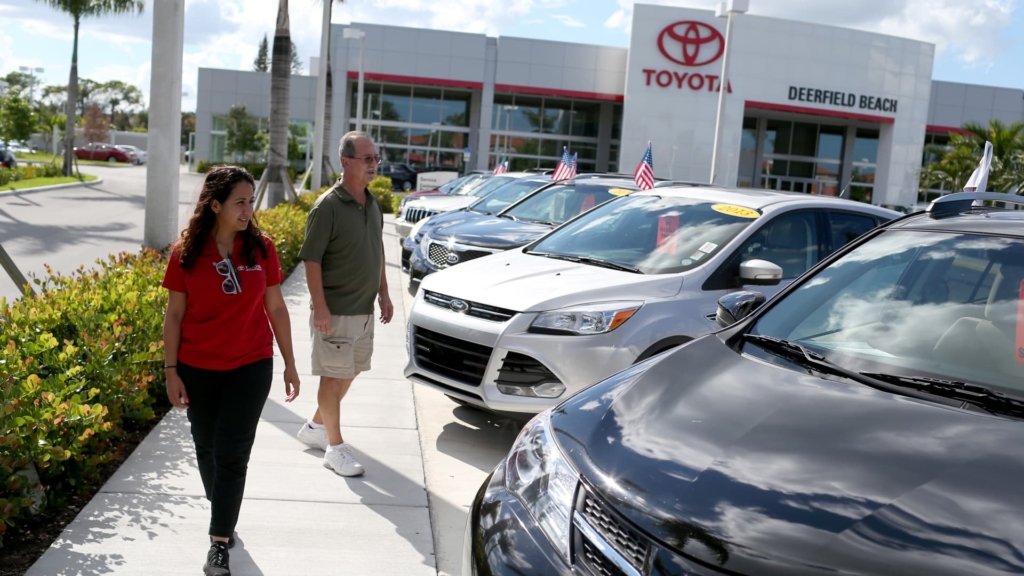DETROIT — The cost of both new and used vehicles in the United States is poised for significant increases this year, driven by President Donald Trump’s imposition of a 25% tariff on imported cars, according to a report from industry analysis firm Cox Automotive.
The firm forecasts that these tariffs will add thousands of dollars to the prices of both imported and domestically produced vehicles, contributing to a larger-than-anticipated rise in used car prices. This price surge is expected to occur despite a potential decline in vehicle sales compared to earlier projections, the report indicated.
The updated forecasts arrive as the auto industry adapts to the newly enacted tariffs on imported vehicles, which came into force on Thursday, and ahead of forthcoming 25% tariffs on auto parts anticipated to take effect by May 3.
“We anticipate a reduction in discounting alongside accelerated price increases as the tariffs are integrated into costs and supply diminishes, resulting in higher prices for most new vehicles,” stated Jonathan Smoke, Chief Economist at Cox Automotive, during a virtual event on Monday. “Over time, we expect a drop in production sales, an increase in both new and used vehicle prices, and the discontinuation of certain models.”
Smoke characterized the current automotive market as a “roller coaster ride,” noting the significant fluctuations in demand driven by regulatory changes and economic instability affecting consumer purchasing behavior.
Cox estimates that the price of imported vehicles could rise by $6,000 due to the tariff on cars not assembled in the U.S., with domestic vehicles facing an additional $3,600 increase from the forthcoming tariffs on automotive parts. These figures compound previous increases of $300 to $500 from earlier tariffs on steel and aluminum.
While manufacturers and suppliers might absorb some of these costs, analysts from Wall Street predict that most of the increases will be passed on to consumers.
Although the tariffs do not directly affect the used car market, shifts in new vehicle pricing and production trends significantly influence used car prices, where most Americans acquire their vehicles.
Cox Automotive now forecasts that wholesale prices for used vehicles, measured by the Manheim Used Vehicle Value Index—which tracks prices from wholesale auctions across the U.S.—will likely rise between 2.1% and 2.8% by the end of the year. This adjustment is a notable increase from an earlier estimate suggesting stability at 1.4%.
The average listing price of a used car was approximately $25,000 as of mid-March, just before a sales boost expected at the end of the month due to looming price hikes linked to tariffs.
Retail prices typically follow wholesale trends, yet they have not decreased at the same pace as wholesale prices in recent years.
“We expect to witness considerable volatility in pricing throughout the year,” stated Jeremy Robb, senior director of economic and industry insights at Cox, during the virtual event. He noted that the week following the confirmation of the tariffs could prove to be the peak sales period for the year.
Changes in used vehicle pricing are not anticipated to mirror the unprecedented hikes observed during the pandemic, which were fueled by strong consumer demand, low interest rates, and a critically low supply of new vehicles due to pandemic-related disruptions.
Ryan Rohrman, CEO of Rohrman Automotive Group in Indiana, described the current used vehicle market for dealers as unstable, likening it to challenges faced during the pandemic.
“We’re observing an increase in our wholesale car count, but we’re struggling to retail as many used cars as we acquire, forcing us to turn to auctions. This trend has been pushing prices up, reminiscent of the situation during Covid, which is concerning,” said Rohrman, whose business focuses on new car sales and a selective range of used vehicles.
While automakers are expected to scale back production and some have halted imports in light of the tariffs, experts believe these responses will not be as drastic as during the early 2020s due to differing market conditions.
“This will reduce vehicle demand, and it is this demand aspect that will likely temper the potential for used vehicle price increases,” Smoke added.


























